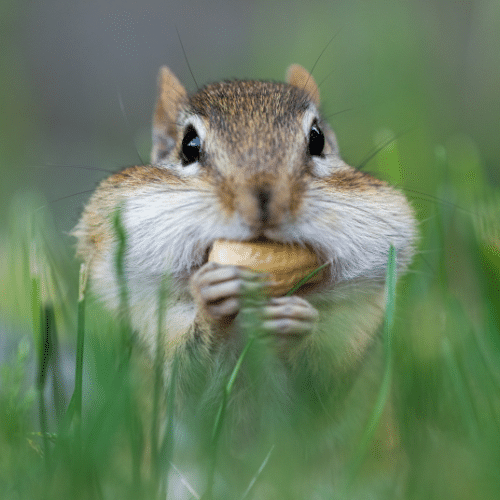Clean Eating For a Gut-Healthy Diet
Clean eating is what a gut-healthy diet is all about. It’s about eating the right foods to help prevent gut problems, such as constipation, inflammation, and gut dysbiosis. In case you’re wondering what dysbiosis is, it occurs when the gut microbiota is out of balance.
The gut microbiota refers to the trillions of bacteria and other microorganisms, both good and bad, that reside in your gut. Maintaining the right balance between good and bad bacteria helps you improve digestion, balance weight, boost mood, and achieve glowing, healthy skin.
WHAT IS CLEAN EATING?
Clean eating is eating foods in their most natural state, or as close to it as possible. Contrary to popular belief, clean eating is not the same as dieting. It simply involves eliminating PROCESSED and REFINED foods from your diet and replacing them with REAL foods. Doing this is the basis of a gut-healthy diet.
HOW TO KNOW IF YOU NEED A GUT-HEALTHY DIET
Do you experience any of the following?
- Anxiety
- Autoimmune conditions
- Cognitive issues
- Cravings for sugary foods
- Difficulty in digesting certain foods
- Joint pain
- Mood swings
- Skin conditions such as eczema, acne, skin dryness, rosacea, etc.
- Stomach problems such as diarrhea, bloating, constipation, gas, and heartburn
- Thyroid irregularities
- Unintentional fluctuation in weight
Many individuals with these issues have benefited from beginning to heal their gut through clean eating to develop a gut-healthy diet.
EATING FOR GUT HEALTHY DIET
Remember, clean eating isn’t about dieting. It is about getting healthy, losing a few pounds, and focusing on what matters, a healthy gut. We will focus on the best foods for gut health and the most significant lifestyle changes needed to optimize it.
Eat Intuitively
- Take a few deep breaths before you eat.
- Pay attention to your hunger and ask yourself, “How hungry are you?”
- Appreciate your food – look at it, smell it, and taste it.
- Use a small salad plate or bowl (avoid large plates).
- Chew your food, Eat Slowly, and sit down to eat WITHOUT distractions.
- Do not eat until full. Leave about 20% room in your belly
FOOD SENSITIVITIES
Foods such as candy, cookies, cakes, pies, donuts, chocolate, and alcohol that taste good are often eaten to fulfill an emotional or social need. However, when we overindulge in these foods, they can leave us with a damaged gut and problems such as bloating, fatigue, constipation, and inflammation. Over time, this damage can lead to increased food sensitivities. Keeping these foods in check is key to vibrant health and a healthy gut.
EAT FERMENTED FOODS
These are foods that support the function and diversity of the gut microbiota. Fermented foods such as sauerkraut, kefir, miso, tempeh, kimchi, traditional pickles, and kombucha are great sources of probiotics for the gut.
EAT MORE FIBER
Dietary fiber supports digestion, helping prevent gut problems such as constipation. Whole grains (quinoa, millet, barley, buckwheat, oats, and so on), legumes, beans, fruits, and vegetables are all great sources of fiber. Eat them daily.
EAT GREEN FOOD
Greens are essential in protecting against cell damage and in managing cholesterol and hypertension. They are also a vital source of vitamins that support the growth of gut microbiota and facilitate the normal functioning of the body, which makes them perfect for a gut-healthy diet. Greens you can incorporate in your diet include broccoli, asparagus, seaweed, kale, watercress, cabbage, beet greens, collard greens, and dandelion greens, among many others.
KICK UP THE FRUIT

Fruits such as blueberries and apples have been shown to promote the growth of Bifidobacterium in humans. This bacterium can prevent intestinal inflammation and, as a result, promote gut health.
SULFUR-RICH FOODS
Garlic, leeks, and onions have powerful immune system-enhancing properties that directly impact the functioning of the gut. Seventy percent of the immune system stems from the gut. Including them in your gut-healthy diet a much-needed boost in every way.
STAPLES VS. INDULGENCES – GUT-HEALTHY DIET
The secret to maintaining a healthy diet is to understand the difference between staples and indulgences.
STAPLES
Staples are the foods that should make up the bulk of your diet, such as:
- Fruits and vegetables
- Beans, legumes, and gluten-free grains
- Poultry and lean meat, eggs, fish, seeds, and nuts
- Healthy fats and organic oils
INDULGENCES
Indulgences are the foods we eat occasionally, such as donuts, cake, sugar, ice cream, and alcoholic beverages. Processed foods are best avoided. It’s totally fine to have an occasional indulgence – we need to enjoy ourselves sometimes. That’s important! However, let’s remember that they are ‘occasional indulgences’ and should not be consumed as daily staples. If it’s hard for you to set healthy boundaries, try limiting indulgences to weekends only. This way, you can still enjoy these foods without letting them dominate your daily eating pattern.
Bringing It All Together
Clean eating is perfect for creating your gut-healthy diet and it doesn’t have to be overwhelming. Start with one or two simple changes:
- Add a serving of greens each day.
- Include a small amount of fermented food with one meal.
- Swap a processed snack for fruit and nuts.
- Take a few deep breaths before eating and slow down.
Each step will support your gut, calm inflammation, and give your body what it needs to feel better, move better, and age with more ease.
If you want more support for your gut health issues, check out our 10-Day Gut Detox and our 6-Week Clean Eating Crash Course.
